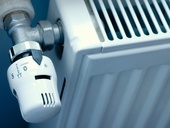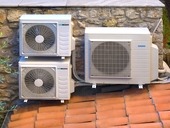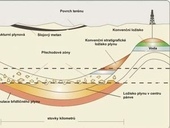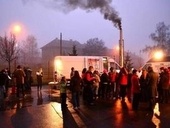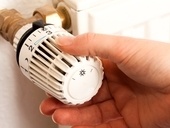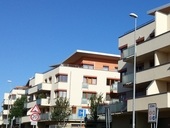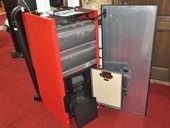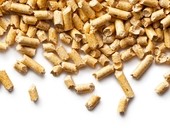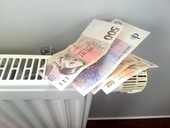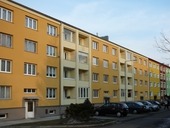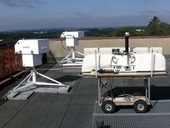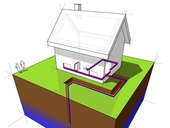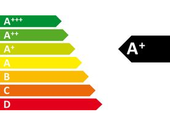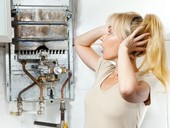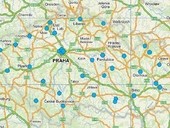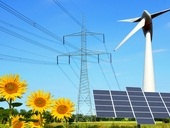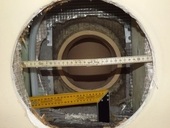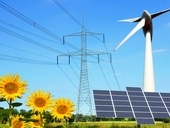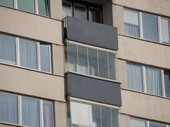The heat transfer between apartments operated on various internal temperatures objectively exists and under certain circumstances this may represent an important proportion of the total heat loss of the apartment. Is it possible to quantify the financial impact of the heat parasitism?
Archiv článků od 8.12.2014 do 16.3.2015
The article describes a procedure for sizing of heat pumps. These devices are often dimensioned for economic reasons only approximately 70 % of the heating load of the building. Variability of heating capacity and power input can be seen from the heating capacity performance curves. Declared heating capacity of heat pumps is given in the parameters of the standard EN 14511. For the purposes of sizing is necessary to work with a heating capacity at maximum heating load.
Shale gas is natural gas that is found trapped within shale formations. Main source of organic matter for genesis of oil and natural gas was plankton. Gradual and lengthy process of oil formation took place in past geological periods and lasted millions of years. Movement of emerged oil and natural gas from source rock to other geologic formations is called migration. We distinguish between primary and secondary migration. The deposits of hydrocarbons are usually divided to conventional and unconventional.
In the last article on the regeneration of residential buildings, I said that additional contributions will be more focused on topics that are crucial for the effective functioning of the heating system, or which are controversial perception among the general public. The first topic that fully meets the two criteria is the heat transfer between the different flats in apartment houses.
Czech Republic is at the beginning of an extensive exchange of unsatisfactory heat sources. On the one hand we have a “straw man” of the Law on Air Protection, on the other hand a helping hand in case of national subsidies. In the following text we show some subsidies for small heating sources in 2015 in the Czech Republic.
The article describes the results of global pellet markets and especially detailed analysis of production and consumption of certified ENplus pellets in the world for the last year. Major trends in the pellet industry are described mainly from the perspective of Europe, which is a defining market for czech market.
Text is focused on the energy effectiveness of the heat pump installations operated in the system for space heating and domestic hot water preparation. Conventional heat pumps are operated in hot water system with low coefficient of performance (COP). Heat demand structure in multifamily buildings with high heat use for hot water influences the energy effectiveness of heat pump operation. Moreover, combination with space heating results in high installed heat capacity of the units which is not used during the year.
The ozone layer is essential for life on Earth. It protects the biosphere against excessive doses of UV radiation. Anthropogenic emissions of ozone-depleting CFCs caused a serious problem. Fortunately thanks to the Montreal Protocol and its appendices the ozone layer regenerates today, virtually on a global scale. Restoration of the ozone layer is accelerated by climate change, what in the future could lead to a lack of UV radiation.
This article describes some principles of functions BHE (Borehole Heat Exchangers) and inner borehole thermal conditions according to new knowledge, which were measured and published in the last five years. On this basis it evaluates the current marketing trends. Some of innovations may have result in a less efficient construction of BHE, or increased risk to the groundwater. For that reason the expertise of the proposed thermal wells should deal not only in terms of hydrogeological conditions, but also in terms of drilling. It is necessary to consider whether the used drilling equipment is able build some BHE with the declared parameters and whether is able to ensure the protection of groundwater as well.
The article discusses the Directive 2010/30/EU of the European Parliament and of the Council with regard to the energy labelling of local space heaters (Ecolabelling), which builds on Directive 2009/125/EC of the European Parliament and of the Council with regard to ecodesign requirements for local space heaters. The output will be compulsory energy labels for heating sources. However, the introduction of energy labels accompanying difficulties.
Owners of residential houses during the reconstruction usually think the following: What does not have obvious defects, it's okay. By this simplified manner can not be seen on the heating system in any way. A sign that the heating is okay, it is not only the fact that heats, but mainly that operates efficiently. And it does not recognize at first glance.
The aim of the Government Decree no. 91/2010 Coll., on conditions of fire safety during the operation of chimneys, flues and fuel appliances, is fire safety. However, the decree requires yearly fire checks even in the chimneys and flues from gas boilers, water heaters and heaters, i.e. where there a risk of fire is excluded.
The result is a growing number of fatal carbon monoxide poisoning – estimated up to 300 a year – and several times higher number of people with lasting health consequences. In the UK, where there it is not required to prevent a non-existent risk of fire in the chimneys and flues, but prevention against the risk of carbon monoxide poisoning, the number of fatal poisoning is about 100 times less (14 in the country with 60 million inhabitants).
Will be someone able to force civil servants to admit error and inform the public about effective prevention of carbon monoxide poisoning?
Calculation model Degreedays (D°) have been integrated to the portal tzb-info.cz 10 years ago. This model enables determinate the count of Degreedays. For the calculation is possible to set up following data: internal temperature, external temperature and the date, when the heating season started and ended. The total number of observation stations in Czech republic gone up this year to 37 locations. For the calculation is possible to use the data from 2005 to present.
Concept Data Support Department of the Ministry of Industry and Trade has prepared this statistical report as a comprehensive national statistics on renewable energy sources. The report focuses on the share of RES in the energy balance of the Czech Republic and describes in detail the development of the each RES categories, which are: biomass, biogas, liquid biofuels, solar, wind and water energy, heat pumps and renewable part of industrial and municipal waste. There is a description of methodology regarding data collection and consequent analysis at the beginning of each section (chapter) of the report. Data included in the report are fully comparable (compatible) with data which are reported on regular basis to International Energy Agency and Eurostat.
Concept Data Support Department of the Ministry of Industry and Trade has prepared this statistical report as a comprehensive national statistics on renewable energy sources. The report focuses on the share of RES in the energy balance of the Czech Republic and describes in detail the development of the each RES categories, which are: biomass, biogas, liquid biofuels, solar, wind and water energy, heat pumps and renewable part of industrial and municipal waste. There is a description of methodology regarding data collection and consequent analysis at the beginning of each section (chapter) of the report. Data included in the report are fully comparable (compatible) with data which are reported on regular basis to International Energy Agency and Eurostat.
zpět na aktuální články
